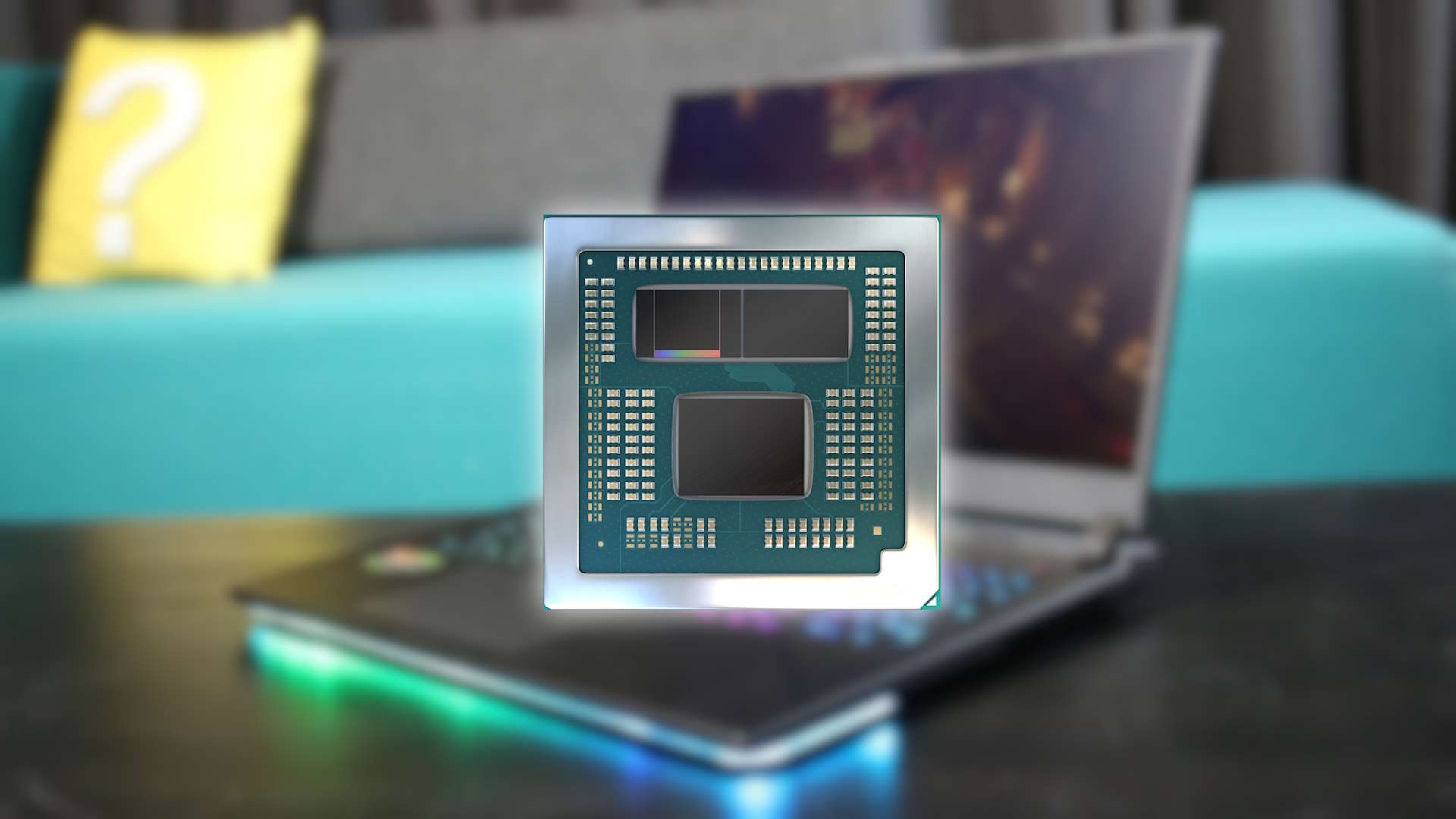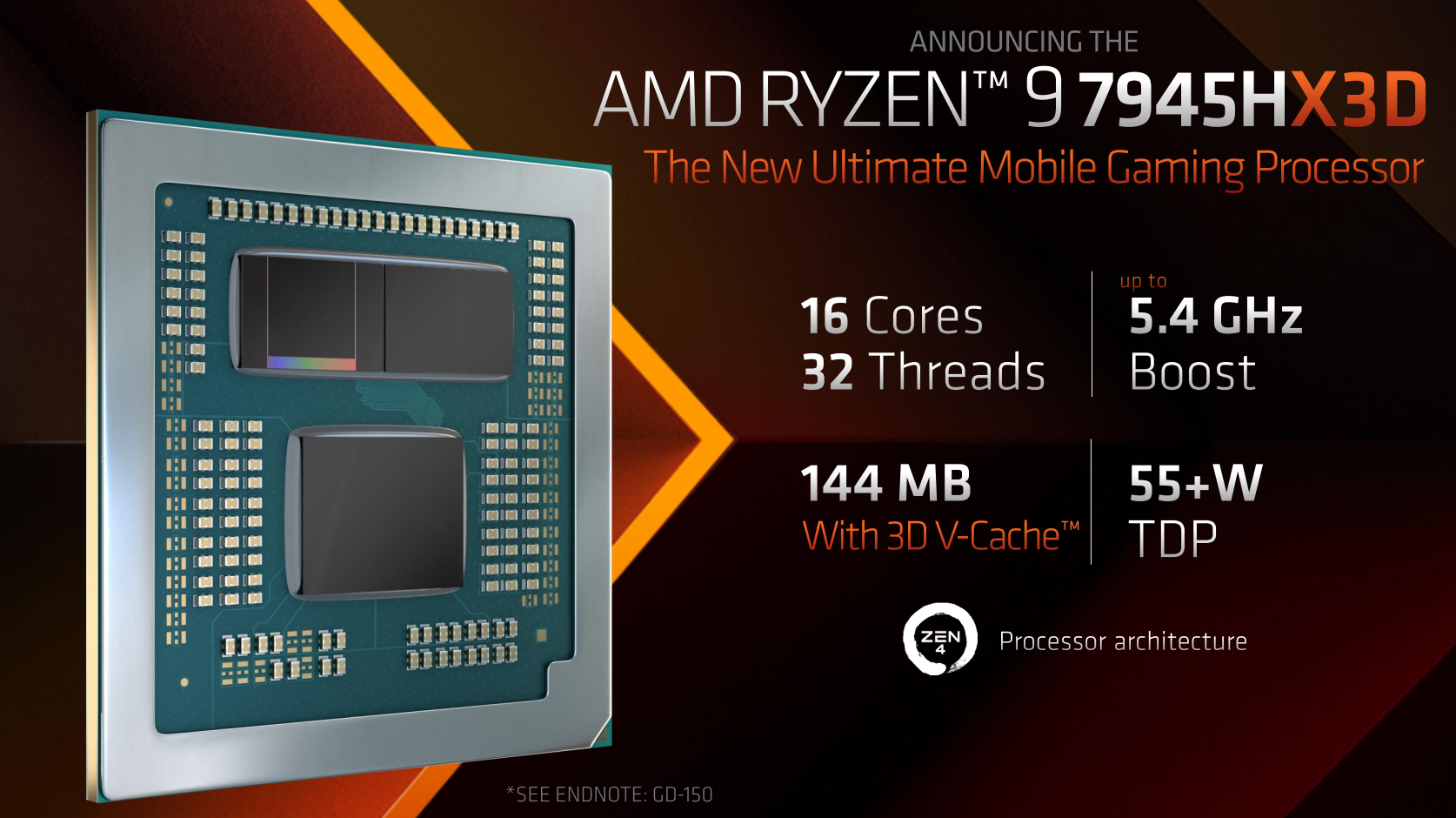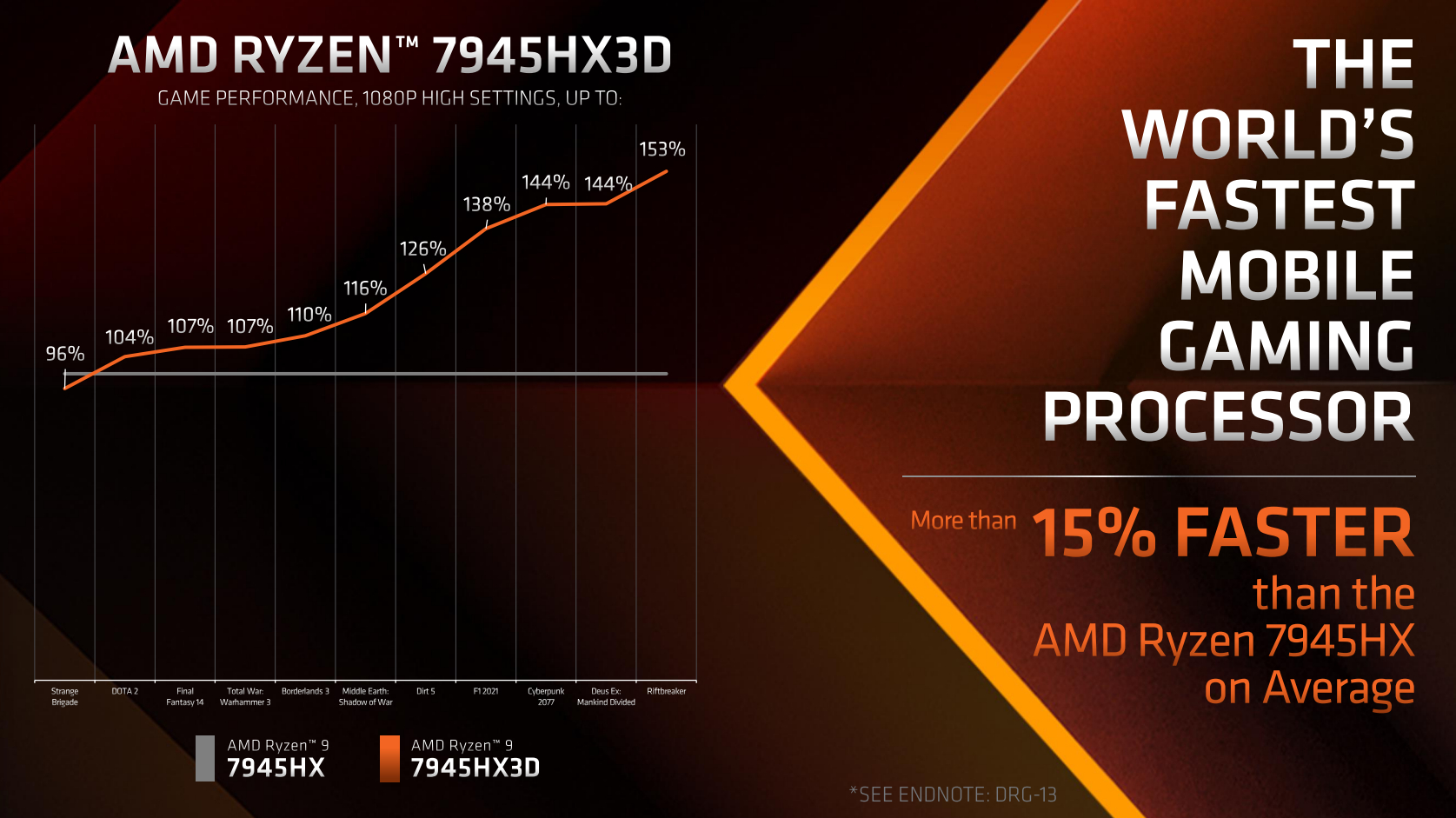
AMD has just officially announced the AMD Ryzen 9 7945HX3D—the first laptop processor to sport the company's excellent 3D V-Cache technology. And it's potentially one of the most exciting mobile gaming chips AMD has ever released, because it uses a hefty extra dollop of L3 cache to boost the frame rates of the majority of games.
I say potentially only because it's limiting the 3D V-Cache tech to its highest spec Zen 4 laptop chip, and then limiting that solo chip to an exclusivity deal with Asus alone. For one device, the Asus ROG Strix Scar 17 X3D.
"This will be available in one laptop," AMD's Donny Woligroski tells us. "So, this will be exclusively available, for the foreseeable future, in the Asus ROG Strix Scar 17."
After getting leaked earlier in the week, the machine will be launching on August 22nd this year, so a wee summer treat around Gamescom, then.

Architecture: AMD Zen 4
Cores: 16
Threads: 32
Boost clock: 5.4GHz
L2 cache: 16MB
L3 cache: 128MB
TDP: 55 - 75W
GPU: AMD Radeon 610M
The chip is more or less identical to the Ryzen 9 7945HX laptop processor, but has the full 64MB of L3 cache bonded on top of one of its eight-core chiplets. It has the same TDP, and the same peak 5.4GHz clock speed (though likely that's only achievable on the chiplet not sporting the extra L3 hat).
I'm a big fan of that processor, and indeed the original Asus ROG Strix Scar 17 machine it launched in. Actually, I'm a bit sad it's not been used in more laptops.
But why is adding some extra cache to that already impressive chip important, and why would you want it in your gaming CPU? The basic answer is that this is how every manufacturer is squeezing some extra performance out of its hardware in an age where it's getting harder and harder to run silicon any faster.
The power and thermal costs of pushing clock speeds ever higher is making that a tough route to go down, but adding a ton of extra cache to a processor, or graphics card, is a relatively easy way to get that little bit higher performance without needing more energy or cooling.


Applications, most especially games, need a lot of very low latency access to a huge amount of data. And the closer that data is to the actual processing silicon, the higher the performance is. If the data is sat in a level of cache that's actually attached to your chip it's going to be able to be used a lot quicker.
If an app can't find the data in the cache—when you've got a small amount of attached memory, for example—then it has to go searching further afield. And if it has to go dipping into your system memory, your PC's RAM, then AMD suggests that takes ten times longer than accessing data via cache.
It's suggesting that, compared to its non 3D V-Cache equivalent, the Ryzen 9 7945HX3D will deliver gaming performance around 15% higher on average. And sometimes much higher.

Considering the success AMD's 3D V-Cache has been, when it comes to providing the best gaming performance for its Ryzen processors, I'm still surprised AMD has been so parsimonious about getting more chips out into the wild. It first launched in the Ryzen 7 5800X3D early in 2022, and was the only 5000-series chip to sport the extra cache, until very recently when the Ryzen 5 5600X3D was released.
And that last was only in very limited volumes exclusively at Micro Center. So yes, AMD has history of releasing very X3D chips, and of obstructive exclusivity deals for them, too. The Ryzen 7000-series has only had three X3D chips itself, and again have been restricted largely to the higher end of the range.

Best gaming PC: The top pre-built machines.
Best gaming laptop: Great devices for mobile gaming.
The fact that AMD is only going with one 16 core, 32-thread mobile chip as a home for its 3D V-Cache is a shame, but fingers crossed this exclusive chip is just testing the water for other mobile processors to get the same treatment. Because laptops are the perfect home for the extra performance boost 3D V-Cache can deliver; the higher frame rates from the extra available L3 cache is more visible at the lower TDPs and lower clock speeds of mobile processors.
We're still in a situation where only one of the Ryzen 9 7945HX3D's compute chiplets (CCD) is getting the L3 cache bump. So the chipset drivers are going to have to be working in real-time, alongside Windows, to figure out which workloads go to which chiplet. Do they prefer higher clock speeds? Off you go to the one without the 3D V-Cache. Do they love a little more cache? You know where to go…
That complexity can add some issues, but the desktop Ryzen 9 7950X3D has done pretty well on that score, to be fair. Though games are generally the ones which benefit the most from higher levels of cache, so a more affordable eight-core laptop chip, with one CCD and the extra 3D V-Cache is what I'm holding out for.







